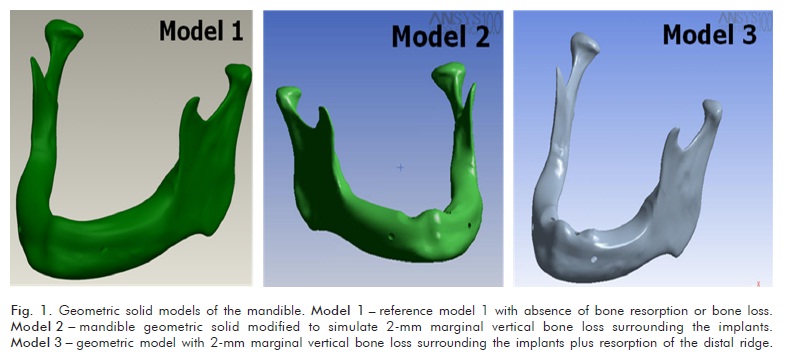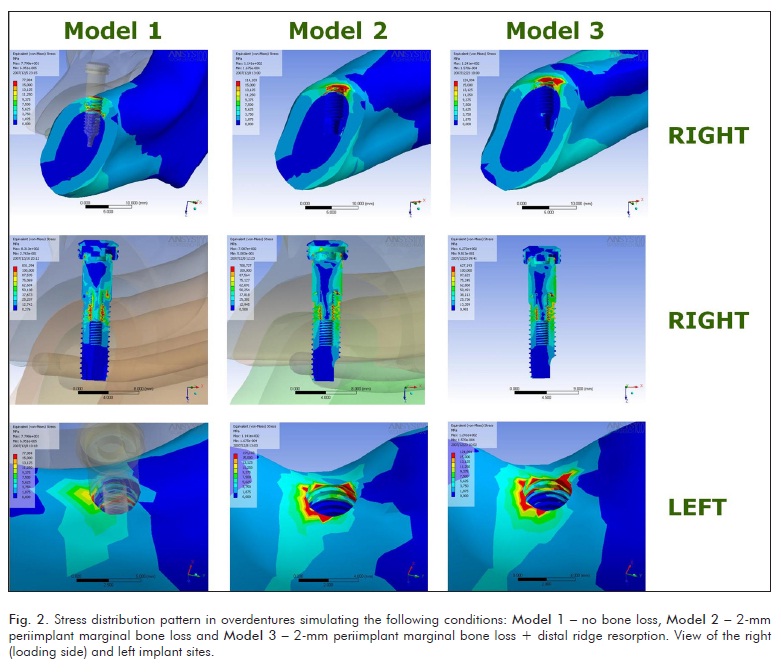PURPOSE: This 3D-finite elements method study evaluated the effect of bone resorption on the stress distribution in overdentures with bone loss surrounding implants and resorption of the distal ridge. METHODS: Tridimensional models were built from the images of a computerized tomography of a mandible and 3D laser digitalization of implants, abutments, mucosa, and complete denture. The geometric models of implants and abutments were mounted at the canine region to build reference model 1 - absence of bone resorption. To build the test models the mandible geometric solid was modified to simulate 2-mm vertical bone loss surrounding the implants (model 2) and resorption of the distal ridge (model 3). Finite elements models were generated, and a 100 N static load was applied at the first molar region of each model to compare the von Mises stress distributions in selected points. RESULTS: Von Mises stresses increased on the bone surrounding implants and on the prosthetic components in the model with 2-mm vertical bone loss. The combination of 2-mm vertical bone loss and resorption of the distal ridge did not increase the stresses compared with the model with only bone loss surrounding implants. The highest stress concentration at marginal bone and implants occurred on the same side of the vertical load application for all models. CONCLUSION: The results suggest that the bone loss surrounding implants increases stress concentration in dental implants, abutments, and marginal bone independently from the bone resorption of the distal ridge.
Dental implants; overdenture; biomechanics; finite element analysis



